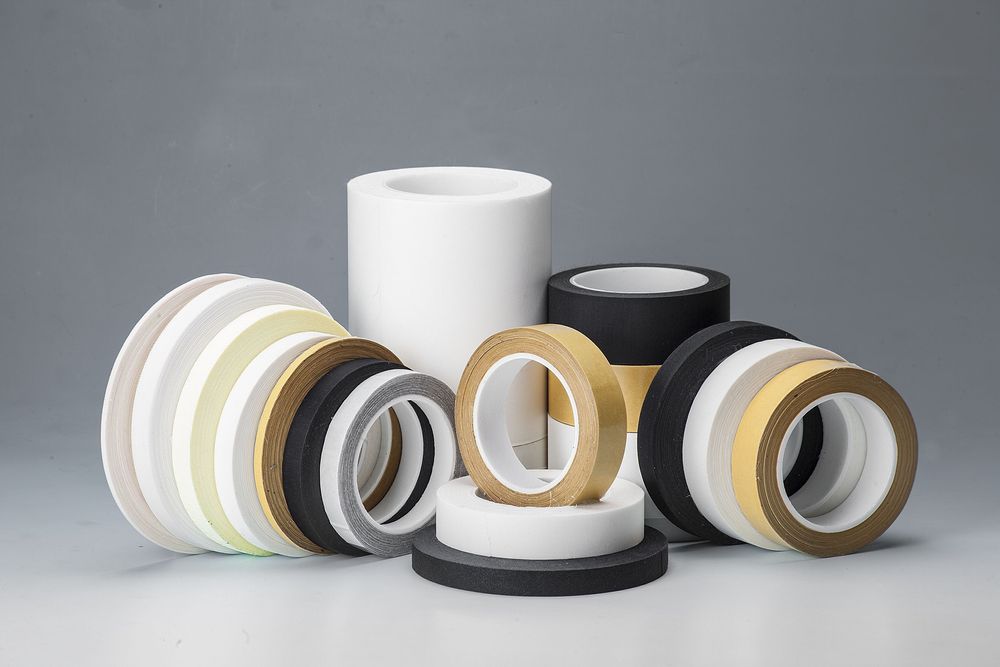
A Quick Guide To Gasket Adhesive Tapes
When it comes to choosing materials to assemble your product, gasket tapes offer benefits for both product design and assembly.
When it comes to choosing materials to assemble your product, gasket tapes offer benefits for both product design and assembly.
What is gasket tape? Gasket tape is pressure sensitive adhesive that can be cut to size to join two materials to effectively seal out liquids, dust, gases and more. Compared to using liquid and spray adhesive, gasket tape provides a peel-and-stick solution that simplifies production without sacrificing on quality.
The advantages of pressure sensitive tape on gasket design:
- Unlike rivets and fasteners, gasket tapes make your design less bulky, while also dampening noise and vibration.
- Gasket tapes made with pressure-sensitive adhesives offer immediate handling strength, with some (like acrylic-based tapes) continuing to build bond strength over time for enhanced performance.”
- Gasket tape contributes to a cleaner and safer production environment, with no fumes or special equipment handling.
To bring your product to life with gasket tape, work with an experienced converting partner who can die-cut your gasket tape – or custom make a peel-and-stick gasket that meets your design requirements.
The key to choosing the right gasket tape is finding the right tape structure and adhesive. The best tapes used for gasketing are: 3M VHB tape transfer tape and double-sided tape. Use this overview to help you narrow your selection and identify which tape types to evaluate further in your design process.
Types of gasket adhesive tapes
3MTM VHB Tape for custom gasket assembly
3MTM VHB Tape is widely used in gasketing applications where both sealing and structural bonding are required. While not a traditional compressible gasket, its closed-cell foam core provides excellent sealing performance in many designs.
Because of its high-strength acrylic adhesive, very high bonding tape can take the place of rivets and screws, making your product design smoother, more streamlined and lighter – not to mention you can eliminate the rattle and vibrations that accompany loosening screws and rivets.
VHB tape can join two dissimilar surfaces, such as: aluminum, steel, glass, plastic as well as painted and powder-coated surfaces.
Adhesive transfer tape for custom gasket assembly
Adhesive transfer tape consists of adhesive only — without a carrier layer. It can be applied directly to sheets of rubber, foam rubber, or silicone to create a custom gasket material. Once laminated to the substrate, the material can be slit to width, then die-cut or laser-cut to your exact dimensions.
This process results in a peel-and-stick gasket with no added bulk — ideal for low-profile applications where maintaining flexibility and conformity is important. Just peel the liner, and the adhesive instantly bonds to your chosen surface
Double-sided tape for custom gasket assembly
Double-sided tape includes an internal carrier (typically film or tissue) with adhesive coated on both sides. It provides added dimensional stability and is well-suited for bonding materials like rubber and foam for gasket applications.
Like adhesive transfer tape, double-sided tape can be laminated to sheets of rubber, foam rubber, or silicone. The laminated material is then converted — through slitting and precision die cutting — into custom gasket tape that fits your design. When it’s time for assembly, simply peel the release liner and apply the tape to the mating surface for an instant bond.
Find information and data sheets on our thin-bonding materials.
How do you choose the best pressure sensitive tape for a rubber gasket?
That depends, because the adhesive transfer tape and double-sided tape are available in different chemistries and bonding strengths. This quick overview shows how they compare.
- Rubber-based adhesives are a cost-effective option that offer quick initial tack to natural and synthetic rubber substrates. However, they tend to degrade more rapidly under UV exposure and heat than silicone or acrylic adhesives.
- Acrylic gasket tape forms a strong, lasting bond to rubber materials, even when exposed to harsh environments.
- Silicone gasket tape offers strong resistance to high temperatures, UV and chemicals, making it ideal for extreme environments — especially when paired with silicone-based substrates.
SRP is proud to be part of the 3M™ Preferred Converter network. Being a Preferred Converter means we get priority access to the best materials in the industry at the best pricing. We pass these benefits on to our customers.
Learn more about our custom gasket and converting capabilities. Contact SRP with your material and design requirements – we’ll get you fast accurate quote within one business day.
